IT spending has evolved far beyond back-office support—it’s now a critical driver for innovation and business growth. As technology becomes more integrated into every facet of operations, businesses must gain control and visibility over their IT investments. However, tracking these expenses across cloud services, hardware, cybersecurity, and other areas can be overwhelming without a sound strategy in place.
To avoid overspending, underutilization, or missed opportunities for efficiency, follow these best practices to keep your IT expenses transparent, accountable, and aligned with your business strategy.
1. Create a Centralized IT Budget
Managing IT expenditures begins with a centralized budget. Consolidating all IT-related costs—whether they fall under marketing, operations, or human resources—into a single, unified view ensures easier forecasting and enables better strategic decisions. Without a centralized budget, tracking IT investments becomes fragmented, making it harder to measure value and identify redundancies.
2. Organize IT Costs into Clear Categories
Not all IT expenses are created equal. Instead of grouping everything under a single line item, break costs down into specific categories. Typical classifications include:
– Hardware (e.g., desktops, servers)
– Software and licenses (e.g., Microsoft 365, industry-specific tools)
– Cloud services (e.g., AWS, Microsoft Azure)
– Consulting and professional services
– Internal labor and support costs
– Cybersecurity and compliance-related expenses
– Training and employee development
Categorizing IT investments makes it easier to track trends, evaluate return on investment, and identify areas for savings or improvement.
3. Use Modern IT Financial Management Tools
Embrace digital tools to streamline your IT spend tracking. IT financial management (ITFM) platforms or enterprise resource planning (ERP) systems with IT modules help automate tracking, enable real-time visibility, and generate digestible reports. The best systems integrate with procurement processes, ensuring consistent recording and categorization of purchases right from the outset.
4. Align Every Expense with Business Outcomes
Every dollar spent on IT should tie back to a broader business goal—whether it’s improved efficiency, enhanced customer service, mitigation of risk, or revenue growth. When evaluating IT expenditures, look at the results: Did a data infrastructure upgrade reduce onboarding time for clients? Did transitioning to the cloud improve operational flexibility? Measuring outcomes instead of just expenses positions IT as a value center rather than a cost center.
5. Define KPIs and Benchmark Performance
Establish clear metrics to assess your IT spending. These key performance indicators (KPIs) can uncover inefficiencies and support future budgeting. Common KPIs include:
– IT expenses as a percentage of total revenue
– Cost per employee or per device
– ROI of completed IT projects
Benchmark these metrics against industry standards to see how your business compares. This also helps make the case for continued or increased investment in specific IT initiatives.
6. Champion Transparency and Communication
Clear communication and reporting around IT spending build confidence across departments. Engage finance, department heads, and executive leadership regularly with summaries that translate technical data into business value. Use visual dashboards, minimize jargon, and focus not just on costs but also on results and business impact. Building a cross-functional understanding of IT investments fosters greater buy-in and shared accountability.
7. Perform Regular Reviews and Forecasts
The tech landscape changes rapidly—your IT budget strategy should keep pace. Schedule routine financial reviews—monthly, quarterly, and yearly—to assess spending, reforecast budgets, and adjust strategies. Involve IT heads, finance leaders, and functional managers in these reviews for a more holistic perspective. Use historical data to predict future needs and identify budget gaps before they become major issues.
Track IT Spending with Cytranet
Strategically managing IT investments allows companies to do more than just save money—it empowers them to make smarter decisions, fuel innovation, and drive long-term success. When businesses proactively track and report on IT spending, they can optimize operations, reduce waste, and align every dollar with a business goal.
Cytranet offers expert IT strategy services to help companies gain full visibility into their technology budgets. Through a Fractional CIO model, Cytranet ensures your technology investments are not only optimized but also aligned with growth objectives. We deliver tailored IT management to help you plan smarter, spend efficiently, and scale faster.
If you’re ready to bring transparency and strategic insight to your IT budget, partner with Cytranet today. Schedule a meeting to get started.


